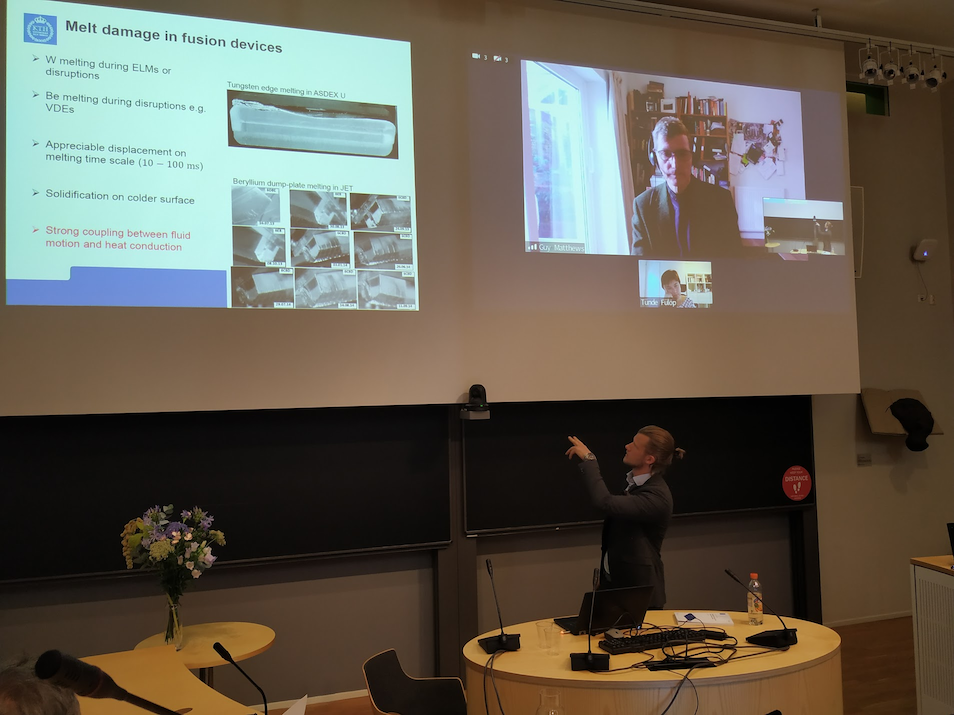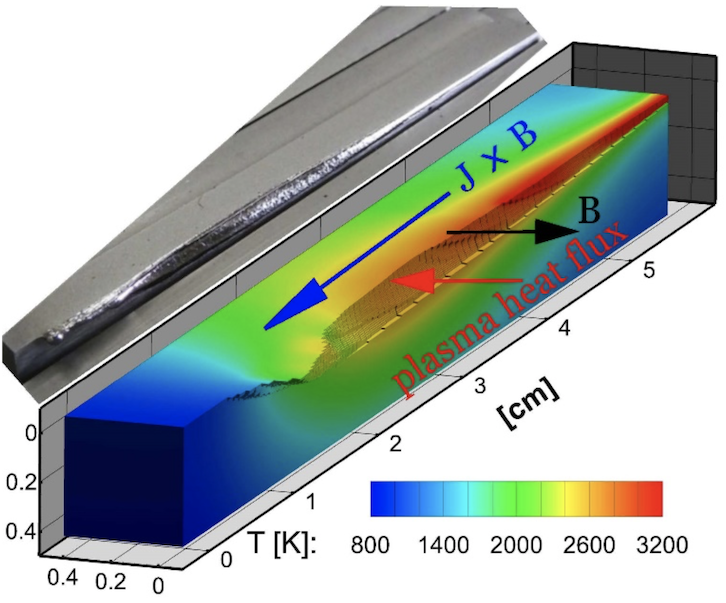Emil Thorén defends the PhD thesis
On Friday Emil Thorén defended his PhD thesis "Modelling of macroscopic melt motion in fusion devices". Congratulations!

On Friday, 9th October 2020, Emil Thorén defended his PhD thesis "Modelling of macroscopic melt motion in fusion devices". The thesis work addresses the fundamental problem of plasma wall interaction in magnetic confinement plasma devices. The opponent was Dr Guy Matthews form Culham Science Centre, Abingdon, UK.
Magnetic confinement fusion is one of the most well developed methods envisioned to achieve thermonuclear fusion energy in the future. A central obstacle that remains in the way of safe and sustainable reactor operation is the interaction that occurs between the plasma and vessel wall components. Lengthy or intense plasma exposures will lead to surface erosion or plasma pollution. Metal plasma-facing components can melt, in which case the liquid is subsequently displaced by various accelerating forces resulting to macroscopic surface deformation, which will ultimately decrease the functionality and lifetime of the armour. Experiments have been performed in numerous contemporary tokamaks in order to elucidate the various processes behind wall heating, metal melting, and surface deformation. Combined with numerical tools, these provide the framework for predictive studies and conclusions for the armour effectiveness in future tokamaks ITER and DEMO.

This thesis is focused on one such numerical tool: MEMOS-U, a heat transfer and fluid motion code that was developed specifically to model macroscopic surface deformation in magnetic confinement devices. The code employs the shallow water approximation of the Navier-Stokes equations, which drastically reduces the computational cost and enables multi-timescale simulations over large exposed areas. A detailed overview of the theoretical framework and numerical implementation of the code is provided, followed by results from benchmarking activities with various melt experiments as well as predictive studies for ITER. Model limitations are also discussed.
PhD thesis title: "Modelling of macroscopic melt motion in fusion devices"
Time: Fri 2020-10-09 10.00
Subject area: Electrical Engineering
Opponent: Dr Guy Matthews, Culham Science Centre, Abingdon, UK
Supervisors: Professor Svetlana Ratynskaia (SPP), Dr Panagiotis Tolias (SPP)
Link to the thesis: urn.kb.se/resolve?urn=urn:nbn:se:kth:diva-281412
